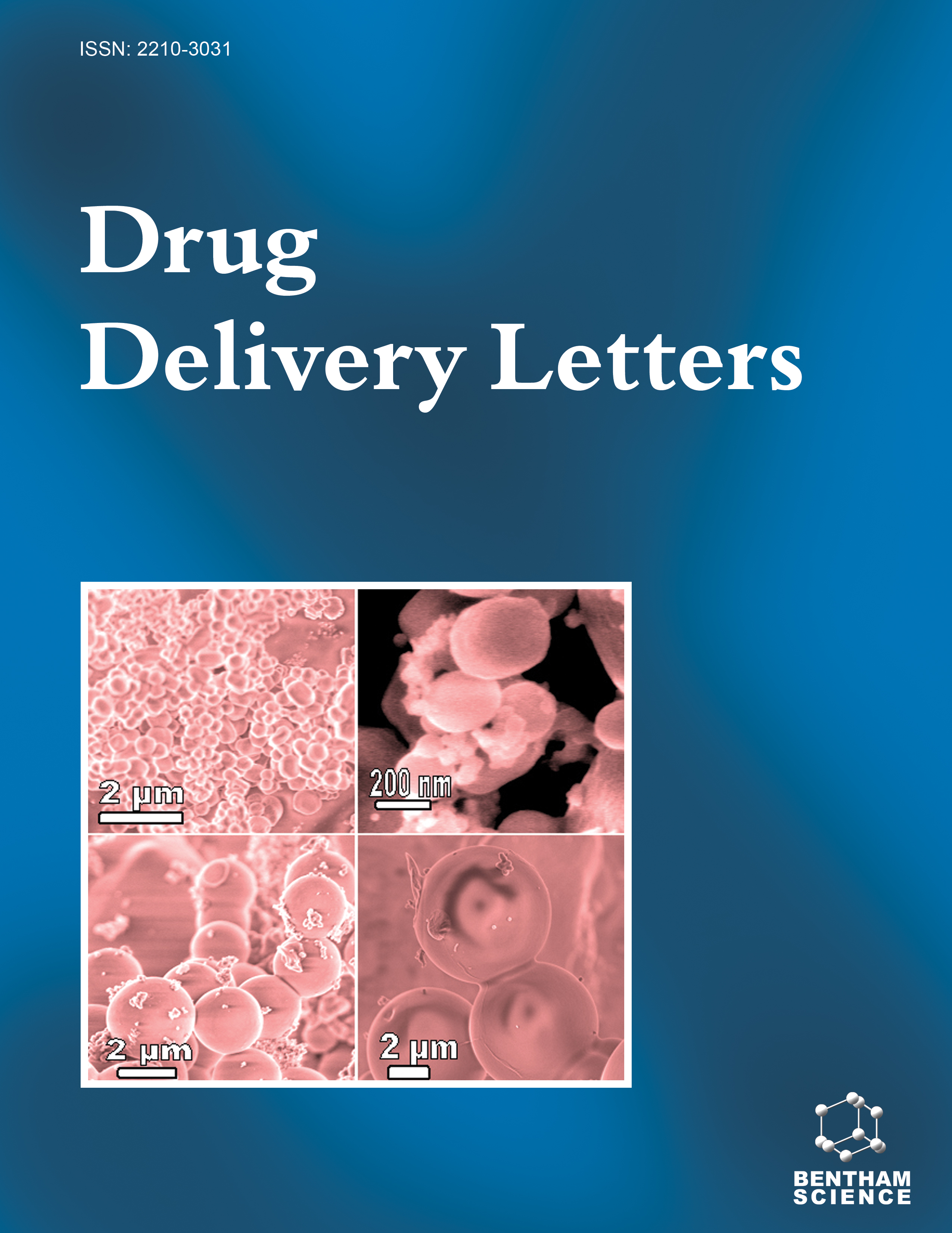- Home
- A-Z Publications
- Drug Delivery Letters
- Previous Issues
- Volume 4, Issue 2, 2014
Drug Delivery Letters - Volume 4, Issue 2, 2014
Volume 4, Issue 2, 2014
-
-
Development of Albendazole Nanosuspension by Various Techniques
More LessAuthors: Akshay Koli, Himanshu Bhatt, Ashish Patel, Sandip Bhagat, Shailesh Shah and Ketan RanchAlbendazole, an anthelmintic drug belonging to BCS class II, has poor bioavailability. Bioavailability is dissolution rate dependent and hence needs novel approach for enhancement of bioavailability. The aim of the study was to develop nanosuspension of albendazole by using various techniques like nanoprecipitation, emulsion template and sonication. Nanosuspensions were prepared using polyvinylpyrrolidone K30 as a stabilizer Read More
-
-
-
Review on Novel Carrier System: Liposomes and Proliposomes
More LessAuthors: Gangadhar Veerapu, H.V. Gangadharappa, B. Nagashubha and V. BalamuralidharaFor many years, improvements have been made in certain attempts for liposomal stability, by several methods, including preparing more stable bi-layers, coating their surface with protecting polymers, and modifying charge. These methods on subjecting to certain changes have led to a novel type of liposomes called proliposomes. Dry, free-flowing particles with a dispersed system that can form a liposomal suspension immedi Read More
-
-
-
Pharmaceutical and Pharmacodynamic Evaluation of Naproxen Incorporated Aloe vera Transgel
More LessThe present research work was aimed to design the transdermal delivery system of naproxen using Aloe vera as aqueous gel base. Aloe vera would able to potentiate the anti-inflammatory effect and also act as penetration enhancer. Carbopol 934 was used as a gelling agent. The prepared gel was assessed for pH, permeation parameters, drug content, skin irritation and in-vitro diffusion. Accelerated stability study Read More
-
-
-
Nanoparticulate Drug Delivery System to Overcome the Limitations of Conventional Curcumin in the Treatment of Various Cancers: A Review
More LessAuthors: Moorthi Chidambaram and Kathiresan KrishnasamyCancer is one of the major causes of the death worldwide and its prevalence is expected to reach about 27 million by 2050 due to aging, adoption of cancer causing behaviours and limitations of cancer treatment. The major therapeutic approach for the treatment of cancer is chemotherapy but most chemotherapeutic agents experience some limitations including poor aqueous solubility, systemic toxicities and drug resistanc Read More
-
-
-
Optimization and Formulation of Cinnarizine-Loaded Chitosan Microspheres in Liquid Dosage Form for Pediatric Therapy
More LessAuthors: Reham Aman, Mahasen Meshali and Galal AbdelghaniCinnarizine pediatric preparation is extemporaneously prepared from adult tablets or capsules that are unstable in liquid dosage form. The aim of this work is to develop cinnarizine oral pediatric formulation with improved stability and organoleptic properties as well as to achieve ease of administration. For this purpose, cinnarizine-loaded microspheres of chitosan cross-linked with tripolyphosphate anion were prepared. A Read More
-
-
-
TiO2∼Deoxyribozyme Nanocomposites as Delivery System and Efficient Site-Specific Agents for Cleavage of RNA Targets
More LessSynthetic DNA molecules of 10-23 deoxyribozymes (Dz) are known to be efficient and site-specific agents for the RNA cleavage in a catalytic manner. To provide the penetration of Dz into cells, we have proposed the new delivery system for deoxyribozymes in the form of TiO2•PL-Dz nanocomposite. These nanocomposites consist of catalytically active Dz molecules noncovalently immobilized through the polylysine link Read More
-
-
-
Development and Characterization of Hydrogel System Bearing Minoxidil Loaded β–Cyclodextrin based Nanosponges for Topical Delivery
More LessAuthors: Rehana Ansari, Rachna Maheshwari, S.C. Mahajan and Vikas JainMinoxidil loaded nanosponges (NS) based hydrogel system was developed for topical application on to the scalp in order to avoid the disadvantages associated with the Minoxidil topical solution. The objective of this work was to formulate, characterize and evaluate hydrogel system bearing minoxidil loaded nanosponges. Nanosponges were developed using solvent evaporation method by reacting β-cyclodextrin with a cross l Read More
-
-
-
Carbon Nanotube: A Versatile Carrier for Various Biomedical Applications
More LessAuthors: Pragya Yadav, Vaibhav Rastogi, Arun Kumar Mishra and Anurag VermaWith the development of nanotechnology different biological nanomaterials have been developed, out of these, Carbon Nanotubes (CNTs) have attracted attention of various scientists as a carrier for the delivery of therapeutic agents. CNTs are third allotropic form of carbon-fullerenes which consist of graphite sheet rolled up into a cylindrical tube. They have nanometer scale diameter with high aspect ratio. CNTs exist in two f Read More
-
-
-
Quetiapine Fumarate Loaded Solid Lipid Nanoparticles for Improved Oral Bioavailability
More LessAuthors: Pooja Aboti, Payal Shah, Dhaiwat Patel and Sonali DalwadiQuetiapine fumarate (QF) is an atypical antipsychotic, undergoing extensive first pass metabolism and hence shows lower bioavailability orally. Solid Lipid Nanoparticles (SLNs) of QF were developed using lipid dynasan 114 and surfactant poloxamer 188 and 407 by double microemulsion-solvent evaporation technique. The aim of this study was to develop and evaluate SLNs of QF for enhancement of bioavailability via oral route. Read More
-
Volumes & issues
Most Read This Month
Article
content/journals/ddl
Journal
10
5
false
en


